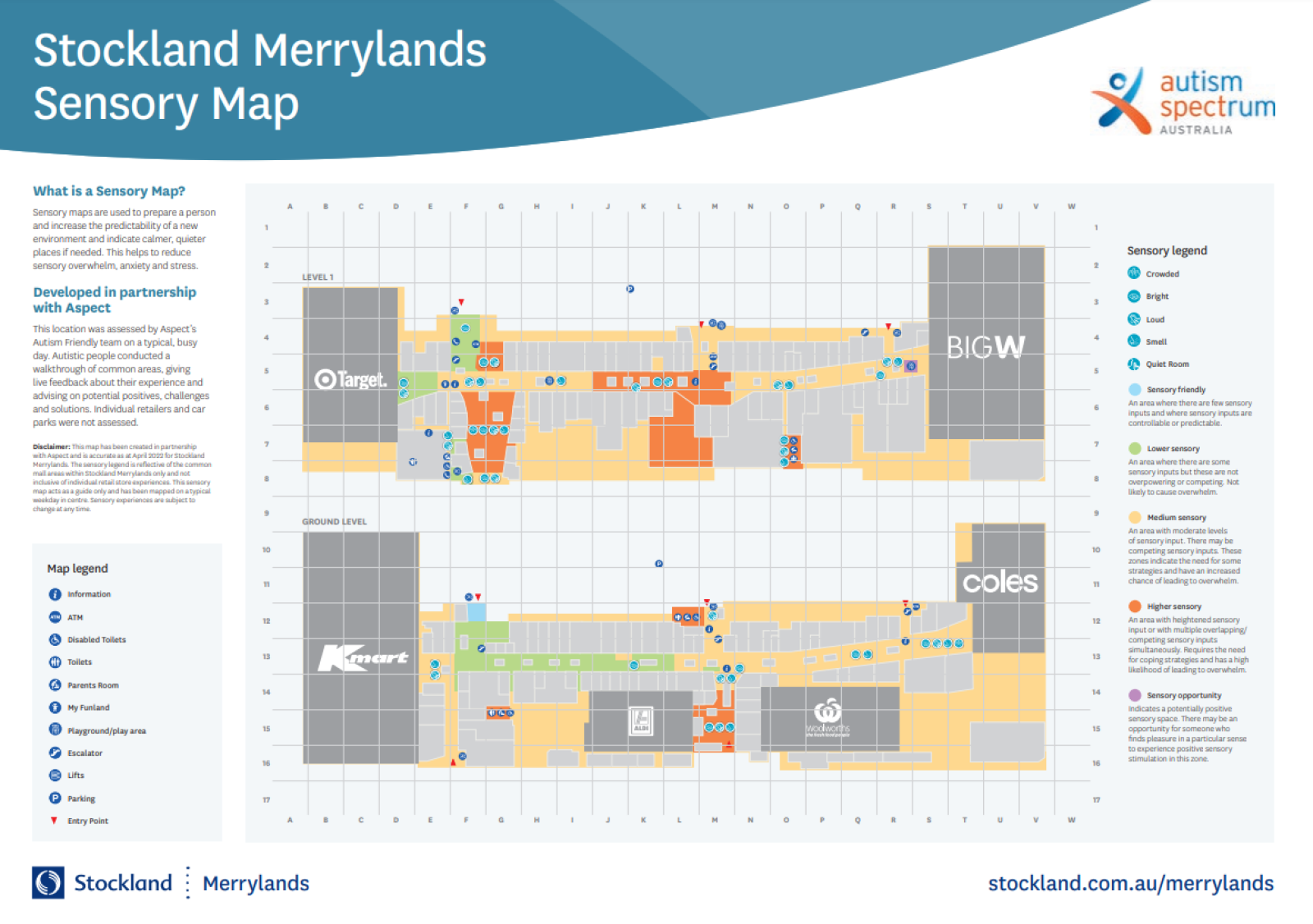Imagine not knowing how a place will sound, look and even smell before you even arrive? While this may not be a big deal for everyone, for people on the autism spectrum and their families this can be the difference between an unpredictable day full of anxiety or a more managed and calm experience.
A sensory map is a simple way to identify areas of an environment where there are potentially overwhelming sensory experiences – loud, smelly, bright, crowded - and where to find quieter, calmer areas. Autism Spectrum Australia (Aspect) is proud to announce the work it has been doing with Stockland Shopping Centres to help create sensory maps to assist their customers and create a more inclusive visitor experience.
Sensory maps give customers with sensory processing differences, like autism, an opportunity to plan ahead before visiting new environments, and better navigate situations that may overwhelm or cause anxiety or stress.
Sensory stressors can be any combination of noise, light, smell, touch as well as crowding or busy areas. Sensory issues can be exacerbated by stress caused by waiting, or the unpredictability of public spaces.
Both Stockland and Aspect have learned a lot from the collaboration to design the first-of-a-kind sensory maps for shopping centres. To develop the sensory maps, Aspect’s Autism Friendly team carried out assessments at Stockland’s Retail Town Centres at Green Hills, Merrylands, Shellharbour, Wetherill Park, Point Cook, and Wendouree.
Assessments involved autistic consultants visiting the centres on a typically busy day and providing feedback on their experience and advice on potential positives, challenges, and solutions for common areas.
Michelle Abbey, Executive General Manager for Retail Town Centres said: “We are delighted to be starting the roll out of sensory maps at our Retail Town Centres during World Autism Understanding Month, which is a positive step towards one of our sustainability goals to improve equitable access to our assets.
“For some time, we have had Sensitive Santa sessions at our centres for children with sensory differences so families can capture a Christmas memory in a quiet and relaxed environment, usually before most stores open.
“We’re now creating more opportunities for customers on the autism spectrum, and those with other hidden disabilities, to access our centres with colour-coded sensory maps that highlight different zones from sensory friendly zones in blue to high sensory zones in red.
“We’ve been working with Aspect on improving inclusion and accessibility within our retail assets since 2020, and we look forward to rolling-out sensory maps across our whole Retail Town Centre portfolio over the next two to three years,” said Ms Abbey.
Jacqui Borland, Aspect CEO said: “These types of inclusionary projects are just so important. “Something as simple as going to the local shop can be fraught with anxiety due to a range of unknowns about an environment.
“Having knowledge about that environment, prior to arriving, will help provide certainty and go a long way towards reducing anxiety. It is just such a great step towards a more inclusive and understanding society,” said Ms Borland.
END




